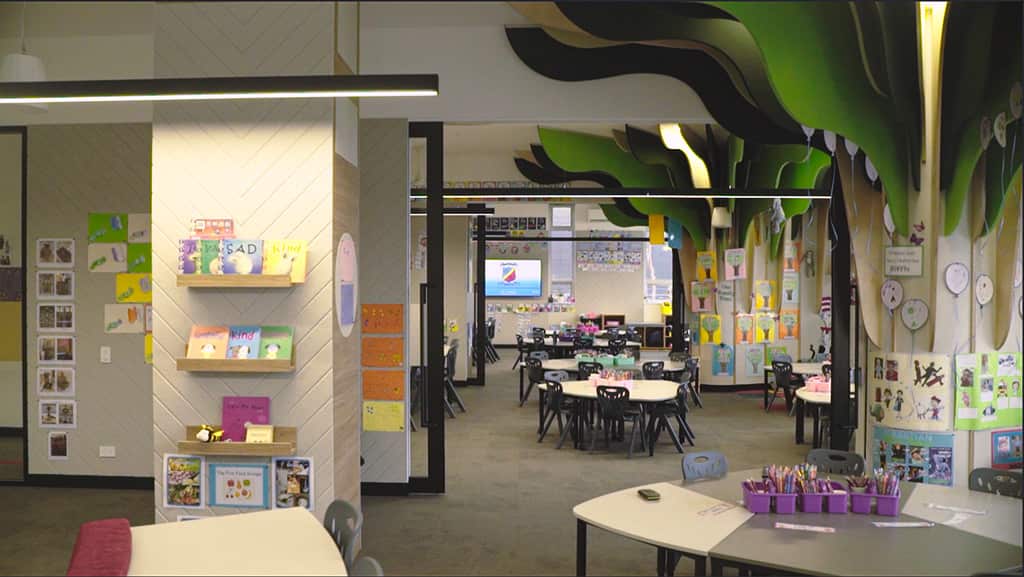Overview
Clare Communications is a system integrator with serious credentials in the Sydney Catholic School sector. Clare worked with Wade Osborne (ICT Project Manager, Audio Visual Lead at Sydney Catholic Schools) on designing and creating a smart, collaborative set of classrooms for junior students at Our Lady of the Sacred Heart in Randwick where they utilized both Promethean screens and Vivi.
The Challenge
Wade’s ease of use motto is “Lights. AV. Go.” explaining “it’s got to be that easy” when it comes to using tech in the classroom. So, when he set to work with Clare Communications around how they could improve collaboration in classrooms, he set out two priorities:
Find technology that required limited training
Whenever you introduce modern technology to a classroom, there are going to be teachers that adopt it quickly, and others that might need a little more support. To ensure all teacher needs are catered for, the chosen tech stack had to not only suit different modes of teaching, but also had to require limited training.
Find technology that complements other elements of the tech stack
Sydney Catholic Schools made a significant investment in implementing Promethean screens across their classrooms, and therefore needed a tech stack that seamlessly worked side-by-side with the interactive panel.
The Outcome
A more interactive learning experience
Sydney Catholic Schools use Promethean iNTERACTIVE to enable teachers the ability to stand at the front of the room and present, allowing students to join them at the front of the room to interact with the lesson. The 84-inch boards were a “big investment, but the benefits outweigh the costs, and the advantages over a more traditional interactive whiteboard are many.”
They then chose to implement a second Vivi-connected panel in the classroom which enhances the Promethean experience by “mirroring content to a ‘dumb’ display elsewhere in the classroom, and in turn allowing the students to break out and collaborate in smaller groups.”
The Benefits
User analytics
According to Wade, one of the many benefits of implementing Vivi across their classrooms is the visibility Vivi Analytics provides.
“We can see the uptime and, conversely, the downtime, on each device. From there, we can report back to the principal. For example, 80 percent of the Vivi rooms are being used but 20 percent of them aren’t. From there we can work with those educators to get an understanding of why those teachers are slow to adopt the technology. Nine times out of ten, it’s about education, ironically — we need to teach them and encourage them to adopt this new form of technology and run with it.”
Teacher flexibility
Using Vivi for wireless screen mirroring and ease-of-use has freed up teachers from the front of the classroom.
“We’ve chosen Vivi for all of our schools as our primary wireless presenter. It means we can teach Vivi to all the Catholic School educators and they can confidently walk into any classroom and make it work. Really, it’s a matter of knowing what room you’re in, punch in the room code, and that gets the main display functioning — away they go.”
To read the full case study, visit AV Technology.


